- Overall prescribing rates for GLP-1 medications increased in September 2024 relative to June 2024 (+11.9%).
- While the rate of GLP-1 prescriptions labeled for type 2 diabetes were about the same as June 2024 (+4.0%), the rate of prescriptions for GLP-1 medications labeled for obesity increased substantially in September 2024 compared to June 2024 (+32.3%). Semaglutide remains the most prescribed anti-obesity medication (brand name Wegovy), followed by AOM tirzepatide (Zepbound).
- Among those with available data, 70.6% of first-time anti-diabetic medication prescriptions in June 2024 had a fill within 60 days (69.5% overall). By comparison, 50.1% of first-time anti-obesity medication prescriptions in June 2024 were filled within 60 days (45.4% overall).
Limited recent data exist on prescribing patterns and patient characteristics for GLP-1 RA medications, whether used as anti-diabetic medication (ADM) for patients with type 2 diabetes and/or used as an anti-obesity medication (AOM) for patients with overweight or obesity. Interest in these medications has recently accelerated, largely for their weight-loss effects, although access to and use of GLP-1 RA medications may be impacted by high cost, limited insurance coverage for patients without T2D and medication shortages.
To offer insight into the latest trends about these medications, Truveta Research has created the GLP-1 RA monitoring report, which will be updated periodically with fresh, timely data. Because Truveta Data provides the most complete, timely, and clean de-identified EHR data, including full patient medical records, notes, and images, linked with claims, SDOH, and mortality data for more than 100 million patients across the US, we can show the latest trends in these medications.
This blog provides a snapshot of the key findings in the most recent report; including prescribing and medication dispensing (indicates whether the patient picked up the medication) trends. For the full analysis – inclusive of demographics, comorbidities, and social drivers of health data for the population, methodology, additional findings, limitations, and citations – you can view the complete report on MedRxiv or directly within Truveta Studio.
Key findings: Prescribing trends
Using a subset of real-world electronic health record (EHR) data from Truveta, Truveta Research identified people who were prescribed a GLP-1 RA between January 01, 2018 and September 30, 2024. We describe prescribing volumes and patient characteristics over time, by medication, and by FDA-labeled use (e.g., ADM, AOM, or unknown).
Overall prescribing trends
The study found that 1,449,442 patients were prescribed a GLP-1 RA between January 2018 and September 2024, with 6,341,367 total prescriptions during this period.
Overall prescribing rates (GLP-1 RA prescriptions per total prescriptions) in September 2024 increased relative to June 2024 (+12.0%).
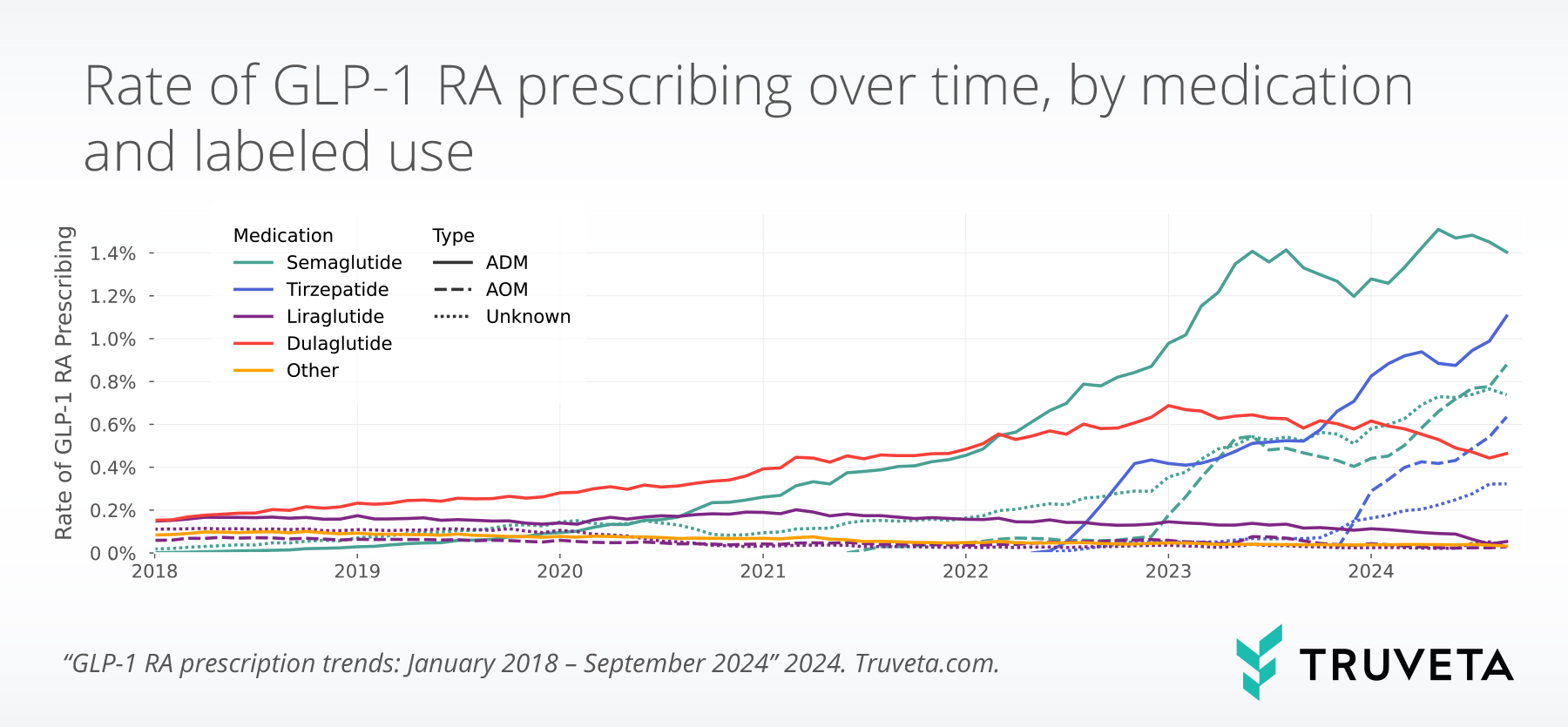
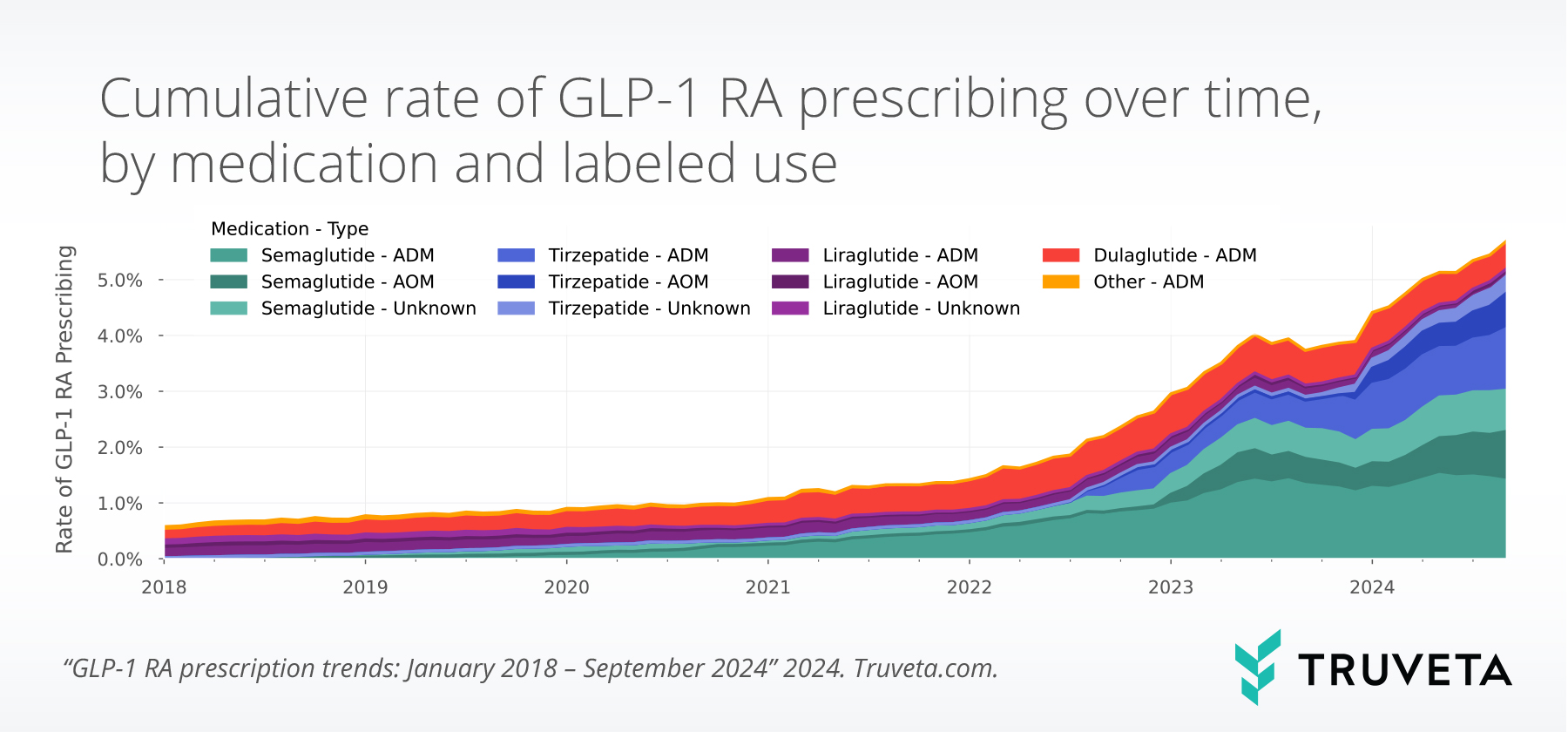
Despite some fluctuation month over month, ADM prescribing trends in September 2024 are about the same as in June 2024 (+4.0%). Semaglutide remains the most prescribed ADM medication, and tirzepatide continues to be the second-most prescribed medication (it surpassed dulaglutide in late 2023).
Among AOMs, prescribing increased substantially in September 2024 compared to June 2024 (+32.3%). Semaglutide also remains the most prescribed AOM (brand name Wegovy), followed by AOM tirzepatide (Zepbound).
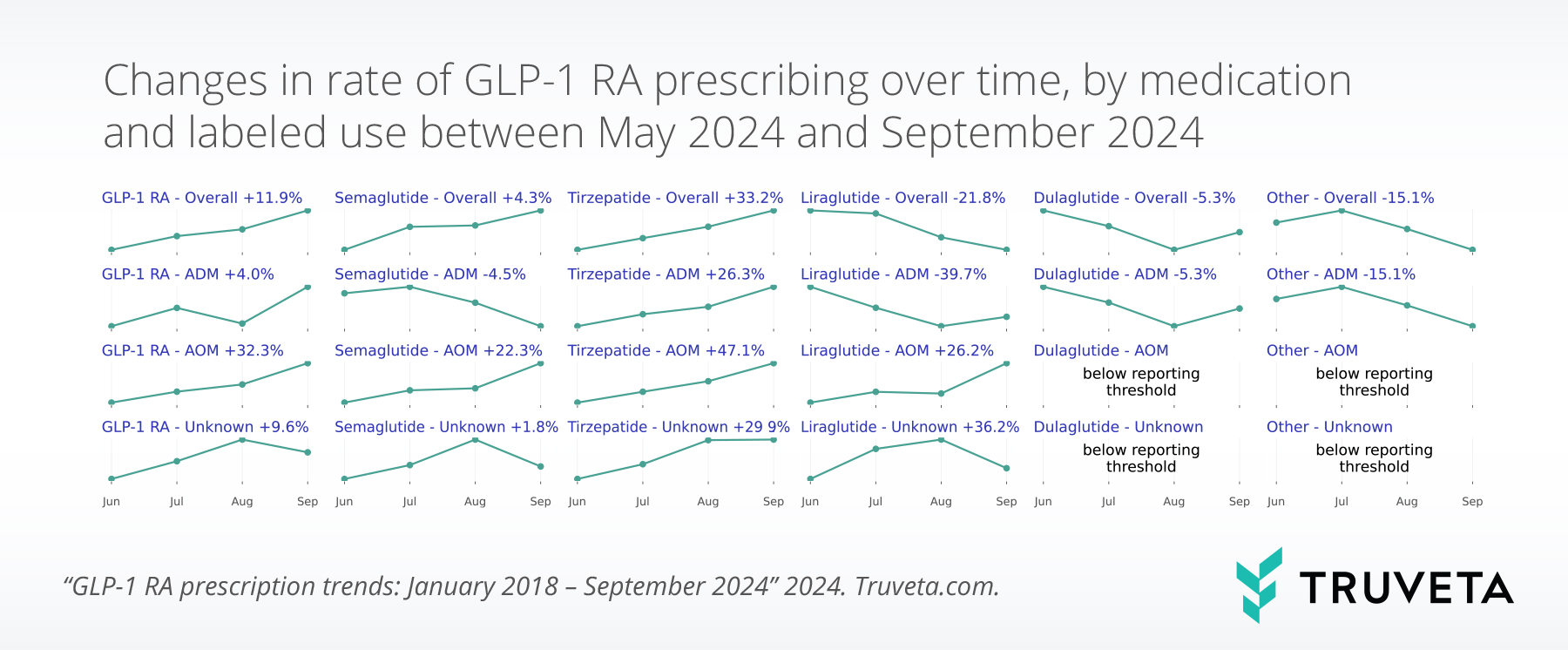
Trends in first-time prescribing
First-time prescribing rates (first-time GLP-1 RA prescriptions per total prescriptions) in September 2024 are about the same as rates in June 2024 (- 1.6%).
Among first-time prescriptions for which use could be established, ADMs accounted for 80.3% and AOMs accounted for 19.7%. The most common first-time medication was semaglutide (brand names Ozempic and Wegovy as ADM and AOM, respectively).
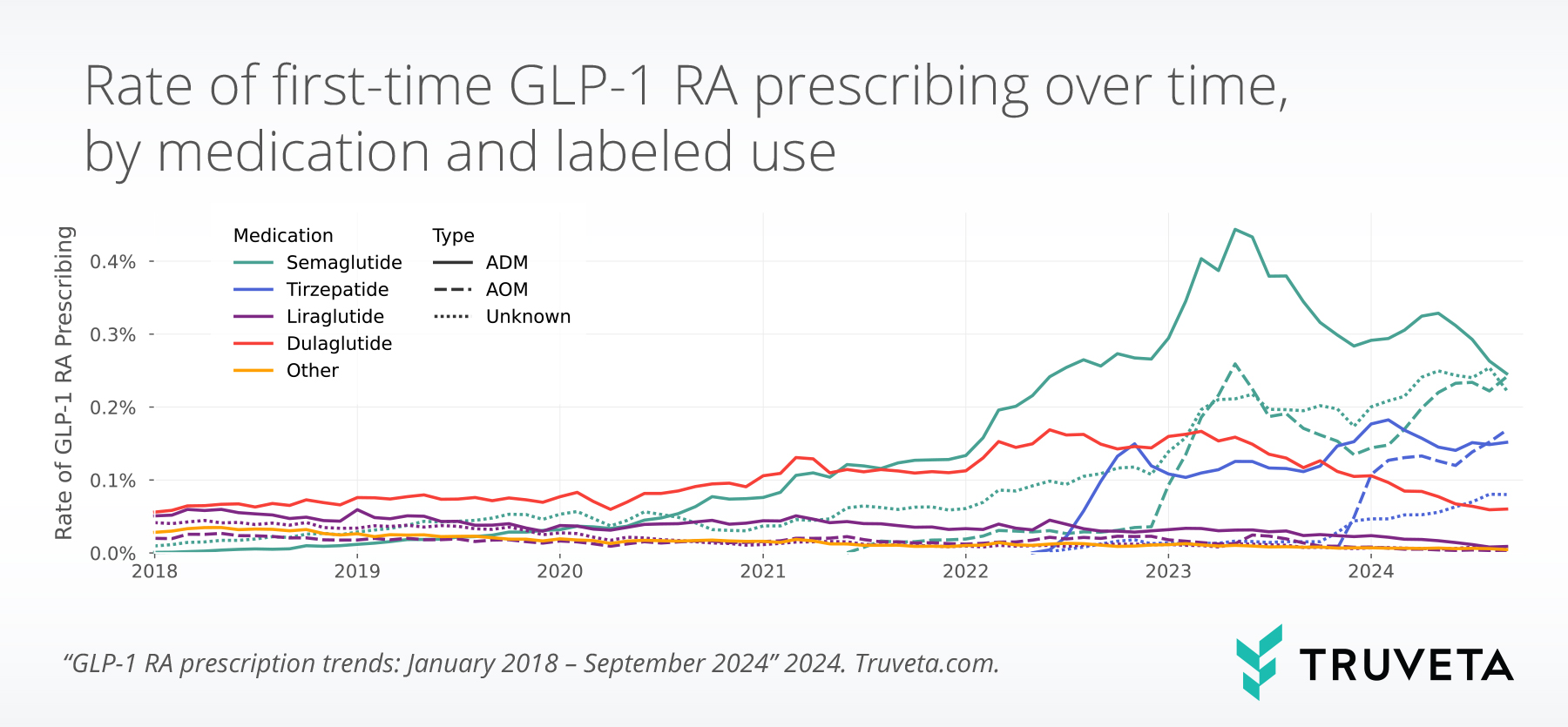
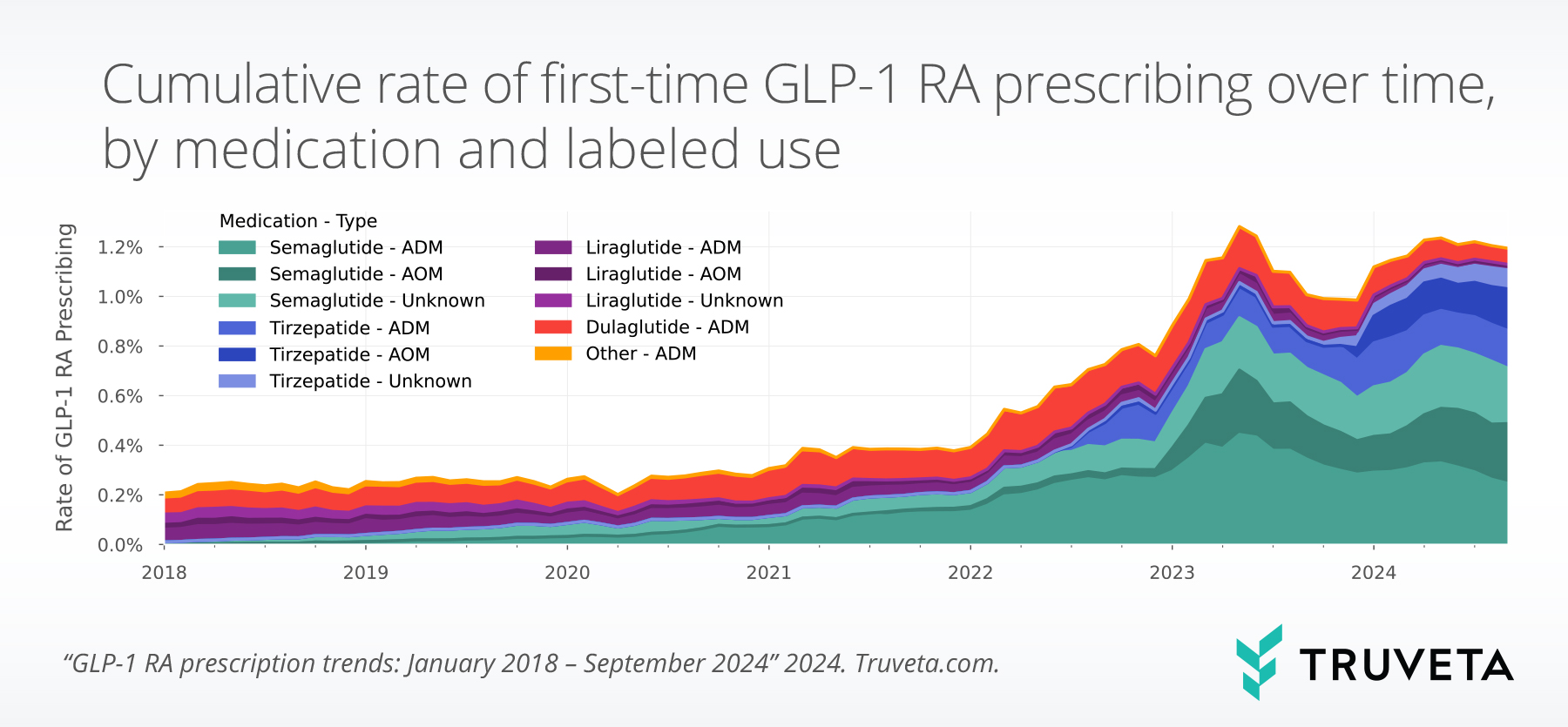
While first-time ADM prescriptions decreased in September 2024 relative to June 2024 (-12.7%), first-time AOM prescriptions increased in September 2024 relative to June 2024 (+16.1%).
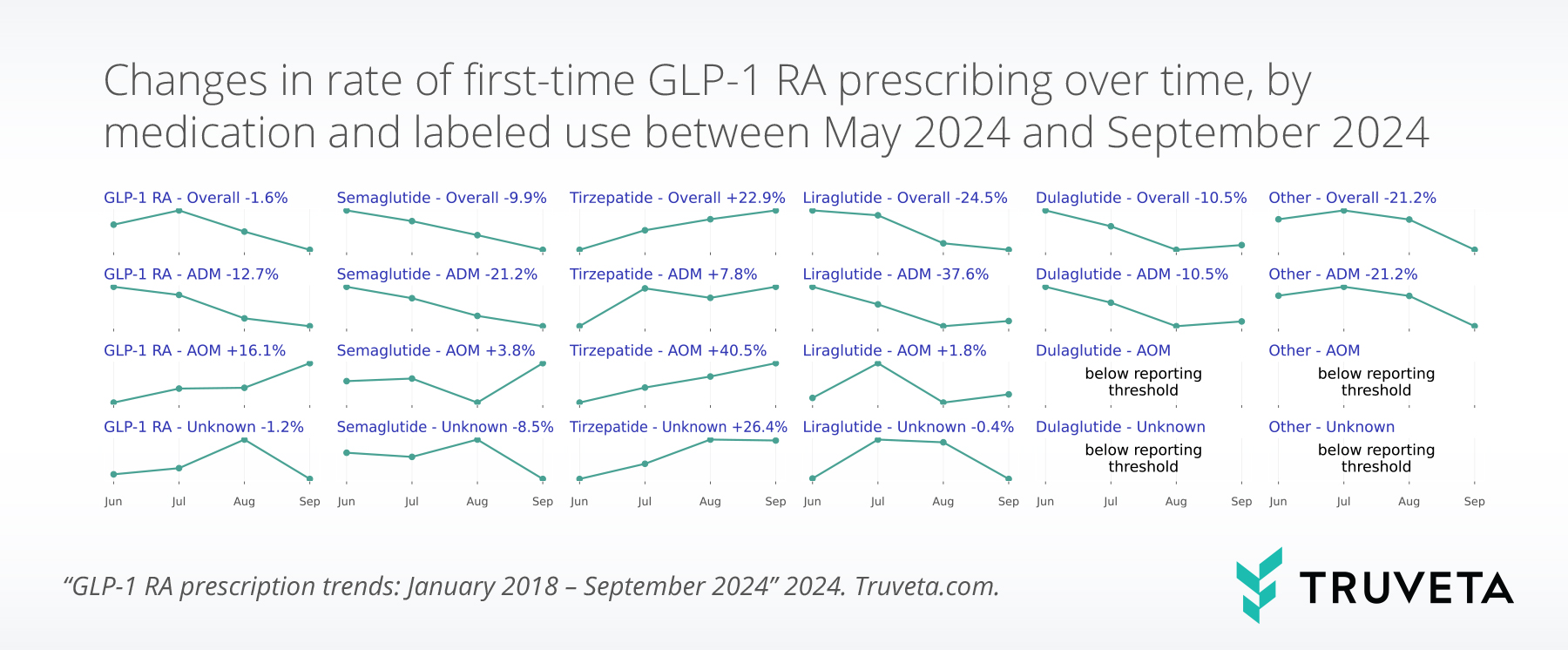
Dispense trends
Dispense refers to prescription fills, indicating that the patient picked up the medication from their pharmacy and provides the closest proxy for use.
During the full time period (January 2018 – September 2024), 73.3% of GLP-1 RA prescriptions had a dispense within 60 days of their prescription (e.g., were initiated within 60 days).
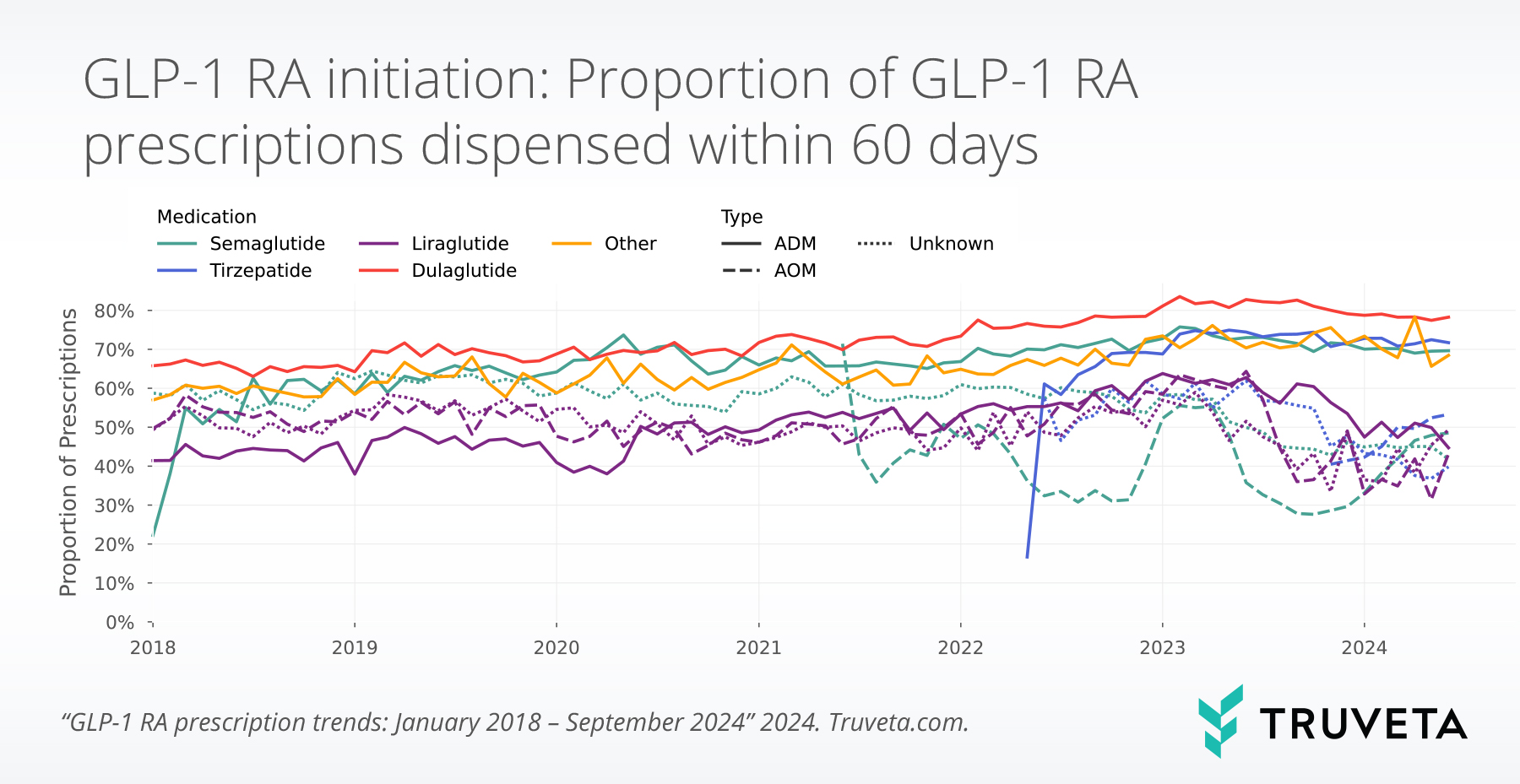
Among those with available data, 69.5% of first-time ADM prescriptions overall and 70.6% in June 2024 had a dispense within 60 days.
By comparison, 45.4% of first-time AOM prescriptions overall and 50.1% in June 2024 had a dispense within 60 days.
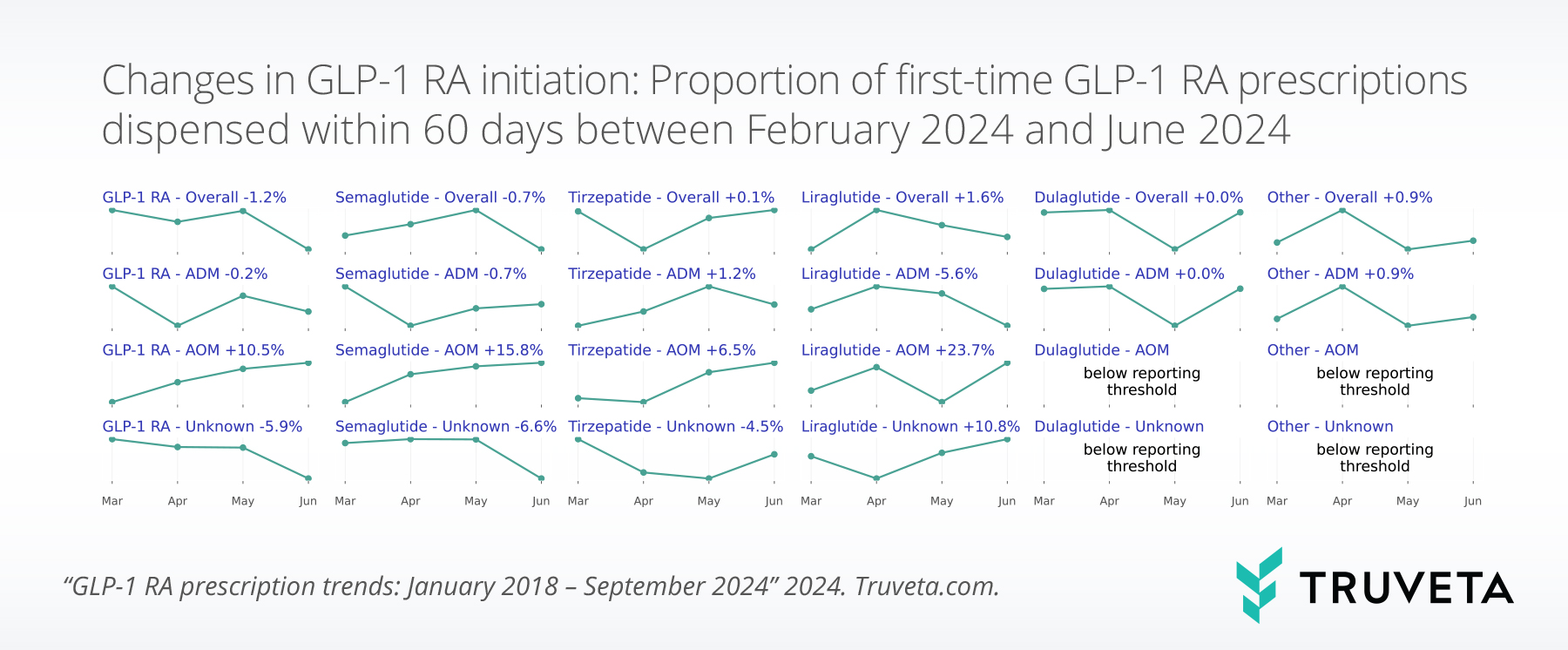
Discussion
With the popularity of GLP-1 RA medications and challenges in access and insurance coverage, we will continue to monitor these prescribing and dispensing trends over time.
The GLP-1 RA monitoring report describes more detailed information about the overall population of patients being prescribed these medications (including demographics and comorbidities), and the proportion and characteristics of patients who filled a GLP-1 RA prescription over time using dispenses. Methodologies, limitations, and citations are also available in the full report. You can also view the full study in Truveta Studio.
These are preliminary research findings and not peer reviewed. All data are preliminary and may change as additional data are obtained. These findings are consistent with data accessed October 8, 2024. Data presented in this analysis represent raw counts and/or rates, and post-stratification methods have not been conducted.

